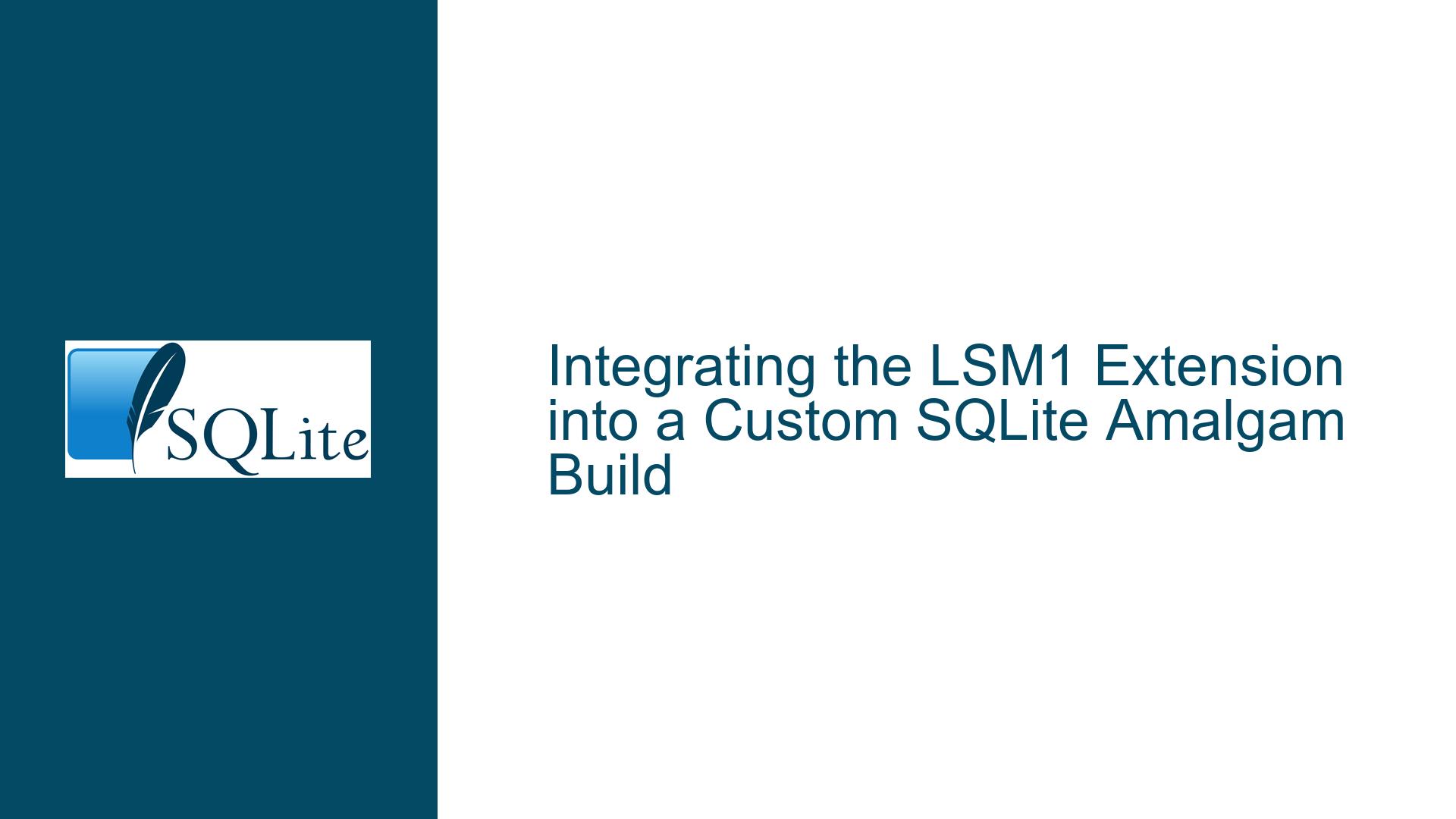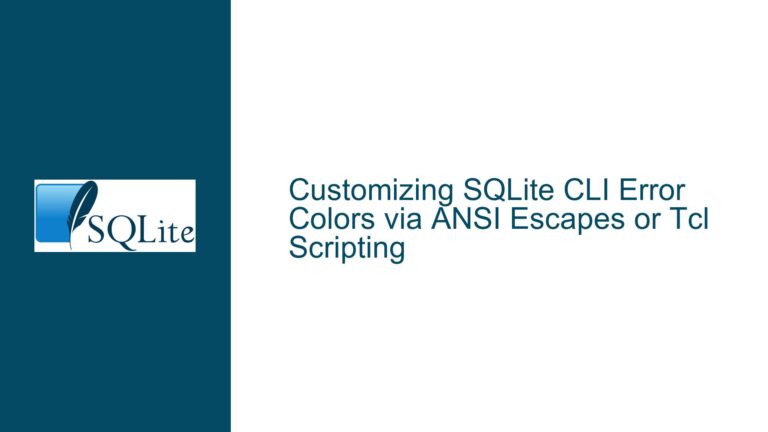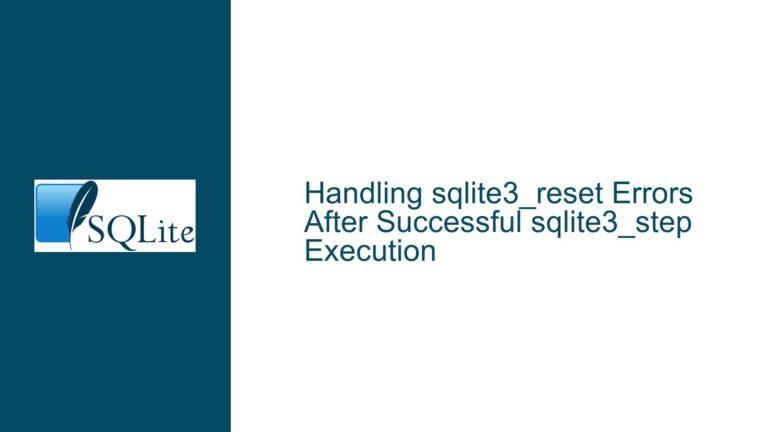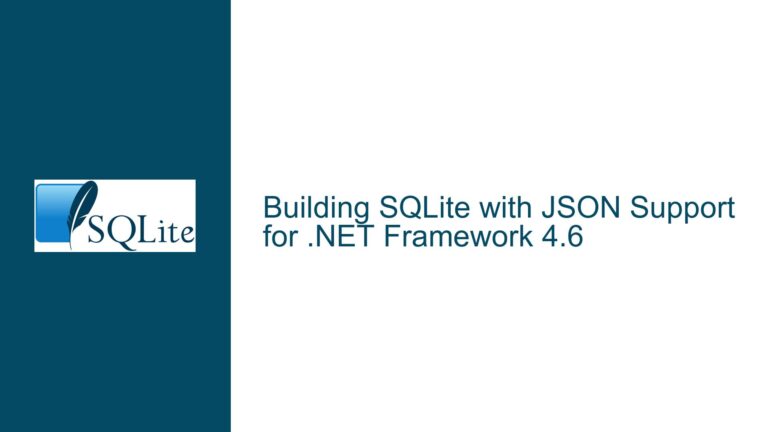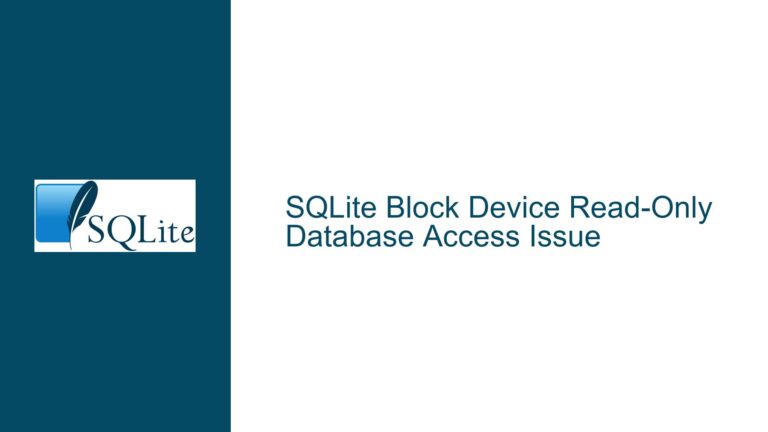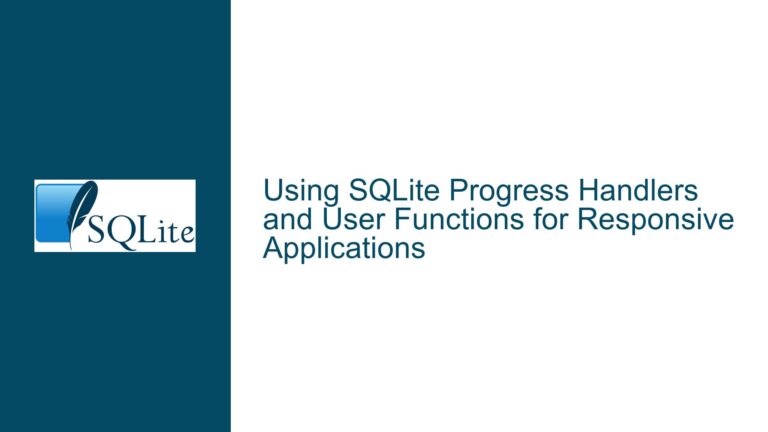Integrating the LSM1 Extension into a Custom SQLite Amalgam Build
Architectural Constraints of SQLite Amalgamation and Third-Party Extensions
The LSM1 extension—a log-structured merge-tree virtual table implementation—is not included in the default SQLite amalgamation build. This exclusion stems from SQLite’s design philosophy of maintaining a minimal core while allowing optional extensions to be added via deliberate configuration. Unlike built-in modules like FTS5 or JSON1, LSM1 is categorized as an experimental or niche component. Its absence from the standard amalgamation requires developers to manually integrate it into their build pipeline.
The amalgamation process consolidates SQLite’s source code into two files (sqlite3.c and sqlite3.h), but the list of included extensions is hard-coded during compilation. Extensions like LSM1 are omitted by default, requiring explicit inclusion through build system modifications. This design prioritizes flexibility for specialized use cases while avoiding bloat in the standard distribution.
Key challenges arise when attempting to embed LSM1:
- Build System Configuration: The SQLite
configurescript and default Makefiles lack targets for LSM1, necessitating manual intervention. - Initialization Mechanics: Unlike statically linked extensions, LSM1 requires runtime registration via SQLite’s auto-extension mechanism.
- Compiler Compatibility: The LSM1 codebase triggers warnings related to type conversions and macro expansions when compiled outside its original environment.
Hard-Coded Extension Filters and Build System Limitations
The absence of LSM1 from the default amalgamation is intentional. SQLite’s build system selectively includes extensions based on their maturity, demand, and resource footprint. Experimental or database-engine-specific components like LSM1 are excluded to reduce maintenance overhead.
Primary Factors Preventing Seamless Inclusion
Missing
--enable-lsm1Flag:
Theconfigurescript does not expose LSM1 as a configurable option. This reflects its status as a non-core extension. In contrast, components like FTS5 or GEOPOLY are included via--enable-fts5or--enable-geopoly.Makefile Target Isolation:
TheMakefile.linux-gccincludes a target for generatinglsm1.c, but this is not propagated to platform-specific Makefiles generated byconfigure. The LSM1 source must be manually compiled or appended to the amalgamation.Initialization Sequence Dependencies:
LSM1’s initialization function (sqlite3_lsm_init) requires access to asqlite3*database handle. However, extensions linked into the core must register themselves during library initialization—before any database connections exist. This creates a chicken-and-egg scenario unless SQLite’sSQLITE_EXTRA_INIThook is leveraged.Compiler Warning Sensitivity:
The LSM1 codebase uses macros (e.g.,MIN,MAX) and type conversions that trigger warnings in strict compilers. These stem from differences in coding conventions between SQLite’s core and its extensions.
Amalgamation Modification, Initialization Hooks, and Warning Mitigation
To integrate LSM1 into a custom amalgamation, follow these steps:
Step 1: Generate the LSM1 Amalgamation
The LSM1 extension is distributed as separate source files in the SQLite repository. Use the mklsm1c.tcl script to produce a self-contained lsm1.c file:
cd sqlite/ext/lsm1
tclsh tool/mklsm1c.tcl > lsm1.c
This consolidates all LSM1 dependencies into a single file.
Alternative: Use the Makefile.linux-gcc target if Tcl is unavailable:
make -f Makefile.linux-gcc lsm1.c
This works cross-platform despite the "linux-gcc" naming.
Step 2: Modify the Build Pipeline
Compile sqlite3.c and lsm1.c together, ensuring the following compiler flags:
gcc -DSQLITE_CORE -DSQLITE_ENABLE_LSM1 -c sqlite3.c lsm1.c
SQLITE_CORE: Disables extension registration trampolines, allowing direct symbol resolution.SQLITE_ENABLE_LSM1: Exposes LSM1-specific configuration guards in the SQLite core.
Step 3: Implement the SQLITE_EXTRA_INIT Hook
SQLite executes a user-defined function specified by SQLITE_EXTRA_INIT during library initialization. Create a file coreinit.c with:
int core_init(const char* dummy) {
return sqlite3_auto_extension((void*)sqlite3_lsm_init);
}
This registers sqlite3_lsm_init as an auto-extension, ensuring it runs on every new database connection.
Compile with:
gcc -DSQLITE_EXTRA_INIT=core_init -DSQLITE_CORE sqlite3.c lsm1.c coreinit.c
Step 4: Suppress Compiler Warnings
LSM1’s use of MIN/MAX macros and pointer casts may trigger warnings. Add these flags to suppress non-critical alerts:
-Wno-unused-variable -Wno-unused-function -Wno-sign-conversion -Wno-implicit-fallthrough
For ambiguous MIN/MAX expansions, define explicit macros before including lsm1.h:
#define MIN(a,b) ((a)<(b)?(a):(b))
#define MAX(a,b) ((a)>(b)?(a):(b))
#include "lsm1.h"
Step 5: Validate the Integration
Open a database connection and verify LSM1’s availability:
.load ./lsm1
CREATE VIRTUAL TABLE temp.lsm_test USING lsm1(lsm1_data);
If no errors occur, LSM1 is functional.
Step 6: Embed into the Amalgamation (Optional)
For a single-file amalgamation, append lsm1.c and coreinit.c to sqlite3.c:
cat sqlite3.c lsm1.c coreinit.c > sqlite3_with_lsm1.c
Recompile with:
gcc -DSQLITE_EXTRA_INIT=core_init -DSQLITE_CORE sqlite3_with_lsm1.c
Final Notes
- Initialization Timing: The
SQLITE_EXTRA_INIThook runs once during library startup, ensuring LSM1 is available globally. - Thread Safety: Ensure thread-safe compilation flags (
-DSQLITE_THREADSAFE=1) if using LSM1 in multi-threaded environments. - Symbol Conflicts: Isolate LSM1’s
sqlite3_lsm_initfrom other extensions by statically linking or using visibility attributes.
By circumventing the default build system’s limitations and leveraging SQLite’s extensibility hooks, developers can robustly integrate LSM1 into custom amalgamations while maintaining compatibility with SQLite’s core APIs.
